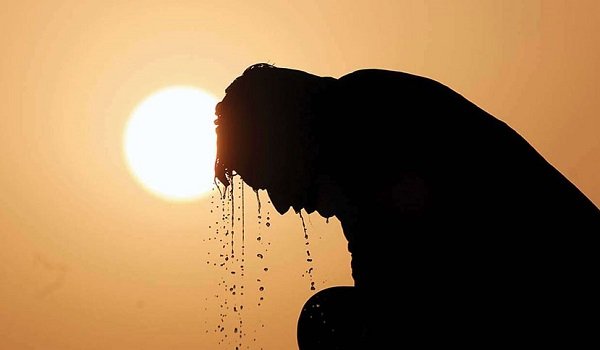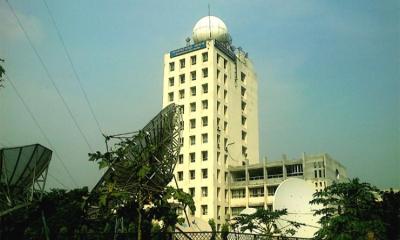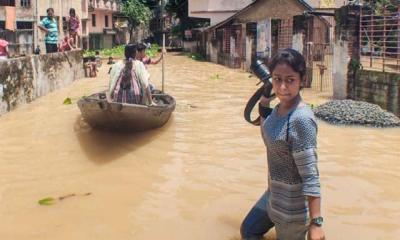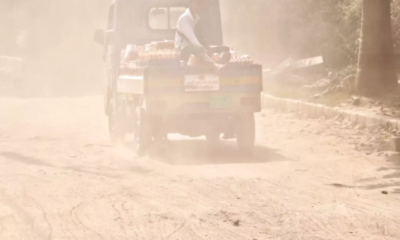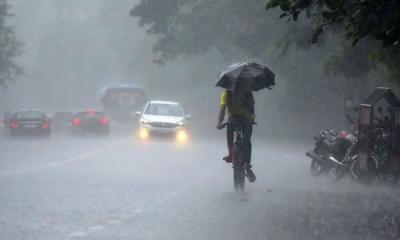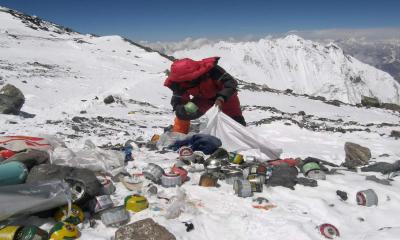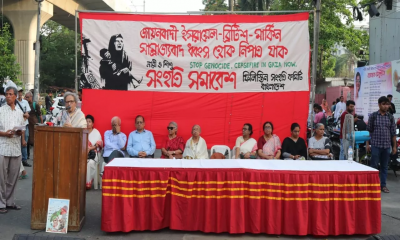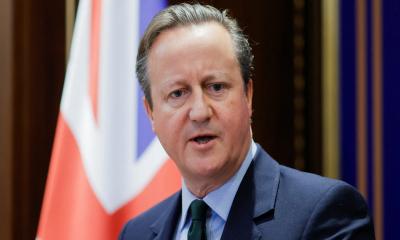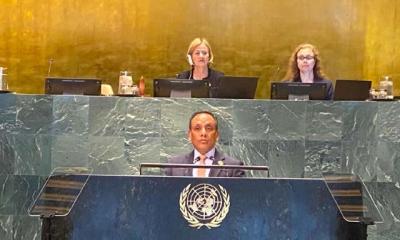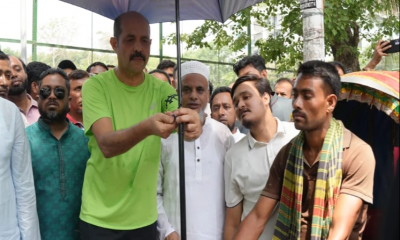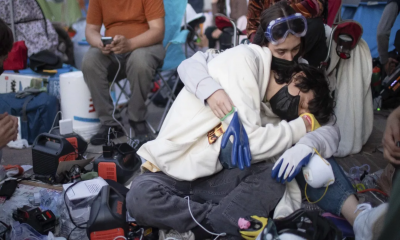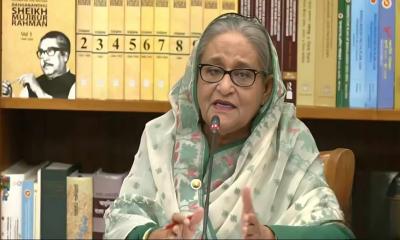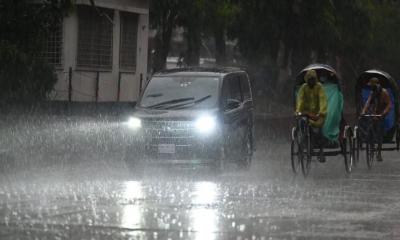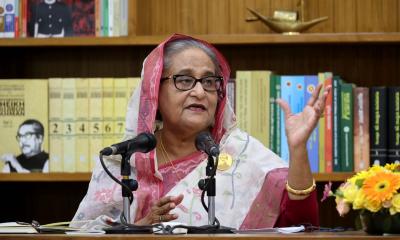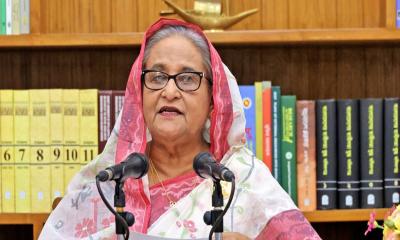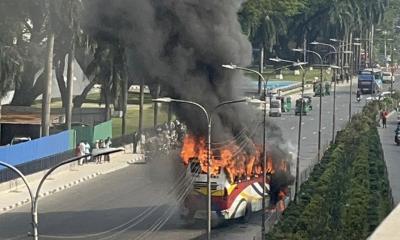With a harrowing rise in temperature in the atmosphere, no fewer than 1,430 people died in Bangladesh between 2017 and 2021, says a recent study.
Titled “Impacts of Climate Change on Health in Bangladesh”, the study was published on October 18, jointly conducted by the Grantham Research Institute on Climate Change and the Environment, and the Centre for Climate Change Economics.
Climate experts fear the number could be higher in 2022 and the current year if further research is done as the heatwaves intensified due to unplanned urbanization and a lack of mitigation measures in recent days.
On the other hand, health experts said that elderly people and infants are more vulnerable to heatwave. Day labourers working under the open sky are directly exposed to the sweltering heat of the sun, often suffering a heatstroke.
There was a staggering 148% increase in heat-related mortality among those above 65 in Bangladesh between 2000–2004 and 2017–2021, an absolute change of 1,430 deaths during 2017–2021 due to heat exposure, the report reads.
In 2021, the summer season experienced a 0.49°C temperature rise, causing infants to face 12 additional heatwave days and leading to higher heat-related deaths.
How does heatwave kill?
Heatwaves and high humidity together create a special condition of the human body which leads to death.
“The death due to heatwave is called a heatstroke. When air contains more humidity, it creates obstacle to release sweat from the body. Due to this reason, the limbs become hotter including the brain, and the amount of water increases and concentrate into the blood. The whole body becomes dry,” said Dr ATM Iqbal Hasan, professor of the Department of Cardiology at Bangabandhu Sheikh Mujib Medical University.
“In this situation, blood pressure increases and the heart beats fast. A man or woman faints in this state, thus, dying very shortly,” he explained.
“We suggest soaking the affected person’s whole body except his nose in cold water so he/ she can breathe and push saline immediately,” he said.
Affecting mental health
The report stated that just 1 degree Celsius increase in temperature increases the probability of reporting an anxiety disorder by 21%, while exposure to natural disasters such as flooding increases the likelihood of depression by 31%, anxiety by 69%, and co-presence of both these conditions by 87%.
The changing nature of heatwave in Bangladesh
A heatwave is a state of heat on the ground that is hard to bear for a human being. Heatwave starts when the maximum temperature reaches 36 degrees Celsius.
According to the Bangladesh Meteorological Department (BMD), when the maximum temperature lies between 36 and 38 degrees Celsius, it is called a mild heatwave, 38-40 degrees Celsius is a moderate heatwave, 40-42 degrees Celsius is a severe heatwave and when the maximum temperature is above 43 degrees Celsius is called an extreme heatwave.
Abdul Mannan, meteorologist of the BMD, said, “We experienced heatwaves in 2011 but the next heatwave came in 2014. There was a gap. But since 2018, we are experiencing heatwaves every year. This is a major change.
“The area coverage of heatwaves also changed. Earlier in 2011 or 2014, the heatwaves were restricted to Rangpur, Rajshahi, Khulna and a western part of Dhaka Division. But in recent years, it reached Chittagong Division, Chittagong hill tracts and Sylhet also. We never experienced heatwaves in the Sylhet region. But in 2022 and 2023, we experienced heatwaves there too,” he said.
“There was always a gap of 15-20 days between two heatwaves. But in 2018, 2021, 2022 and 2023, the duration of each heatwave was 14-15 days. And there was a gap of only a few days between the heatwaves. Hence, the people did not get the healing time. Moreover, all predictions show that the heatwave will intensify further in the next 10 years,” the meteorologist said.
“If humidity remains 70% and temperature is 32-33 degrees Celsius, the heat will feel like 40 degrees Celsius due to the combination of high humidity and the temperature. And the recent years, a high amount of water vapor coming from the Bay of Bengal in the summer is another cause of unbearable heat,” he furthered.
“Earlier, in the morning, the humidity would remain 70-80% which reduces to 30-40% in the evening. But nowadays, in the morning, the humidity reaches above 90% and it slightly drops to 70% in the evening. The situation is becoming worse in a very short period of time,” he added.
How heatwaves intensifying?
Unplanned urbanization along with the impact of monsoon and the el- Niño and the lack of effective measures against rising temperature are behind the intensification of heatwaves in Bangladesh’s urban areas, experts say.
M Zakir Hossain Khan, executive director of the Change Initiative, said, “Concrete structure is rising at an unbeatable pace in the cities which is unplanned and unfriendly with the environment, and the use of air conditioners in those structures is increasing as well.
“Concrete absorbs heat and the high humidity helps concrete structures to absorb heat for a longer period of time. Both concrete and air conditioners release heat into the air slowly. As a result, the heat amplifies and the duration of hot hours’ increases,” Zakir said.
“On the other hand, free and green space rapidly decreasing in the cities. Moreover, the global warming is rising. All these multiple impacts intensifying the heat waves, he said.
And the bustling city of Dhaka has become a heat island which means the absorbers keep heat inside the city and shut down the way for heat to spread out from the city area, Zakir added.
“We have to build environment-friendly infrastructures, to follow integrated financing in development and nature-based solutions keeping adequate greeneries,” he concluded.
However, urban planners are not very hopeful about the livability in the capital city.
Urban planners’ take
Adil Mohammed Khan, former secretary of the Institute of Planners said, “Dhaka is becoming an unlivable city day by day. The main reason is that the city started growing without a proper plan in 1971. Now Dhaka is the main destination of more than 60% of the internal migrants, pushing up the demands for infrastructure. However, the infrastructures are being built in the worst way by destroying greenery.
“The first task is to decentralize urbanization by creating employment opportunities in other cities to redirect the migration flow. The second important step is to impose restrictions in various sectors such as unplanned infrastructure, transport, and the use of air conditioners. The third important step may be a massive reform by reducing concrete structures and freeing more open space.
“Dhaka is the most densely populated city in the world. To keep Dhaka’s population healthy, the only way is to reduce population and to take the steps appropriate to reduce heat generation, he said.
Maximum temperature records
In the current year, the maximum temperature of the country was recorded at 43 degrees Celsius, 41.2 degrees Celsius was the highest recorded temperature in the two previous years. However, the maximum temperature was recorded at 38.5 degrees Celsius in 2017.
Bangladesh started recording temperature data in 1949. In the last 73 years, the highest 45.1 degrees Celsius temperature was recorded on May 18, 1972 in Rajshahi.
Annual average temperature
According to the BMD, in 2017, the country’s annual average temperature was 25.65 degrees Celsius which came down to 25.25 degrees Celsius in 2018. However, the annual average temperature increased to 25.60 in 2019 and dropped again to 25.38 degrees Celsius in 2020 which jumped to 25.68 degrees Celsius in 2021. The average temperature last year was around 26 degrees Celsius.
Summers are becoming hotter and longer, the monsoon season is extending from February to October, and winters are also becoming warmer. With these changes, Bangladesh appears to be losing its distinct seasonal variations, according to the study.


